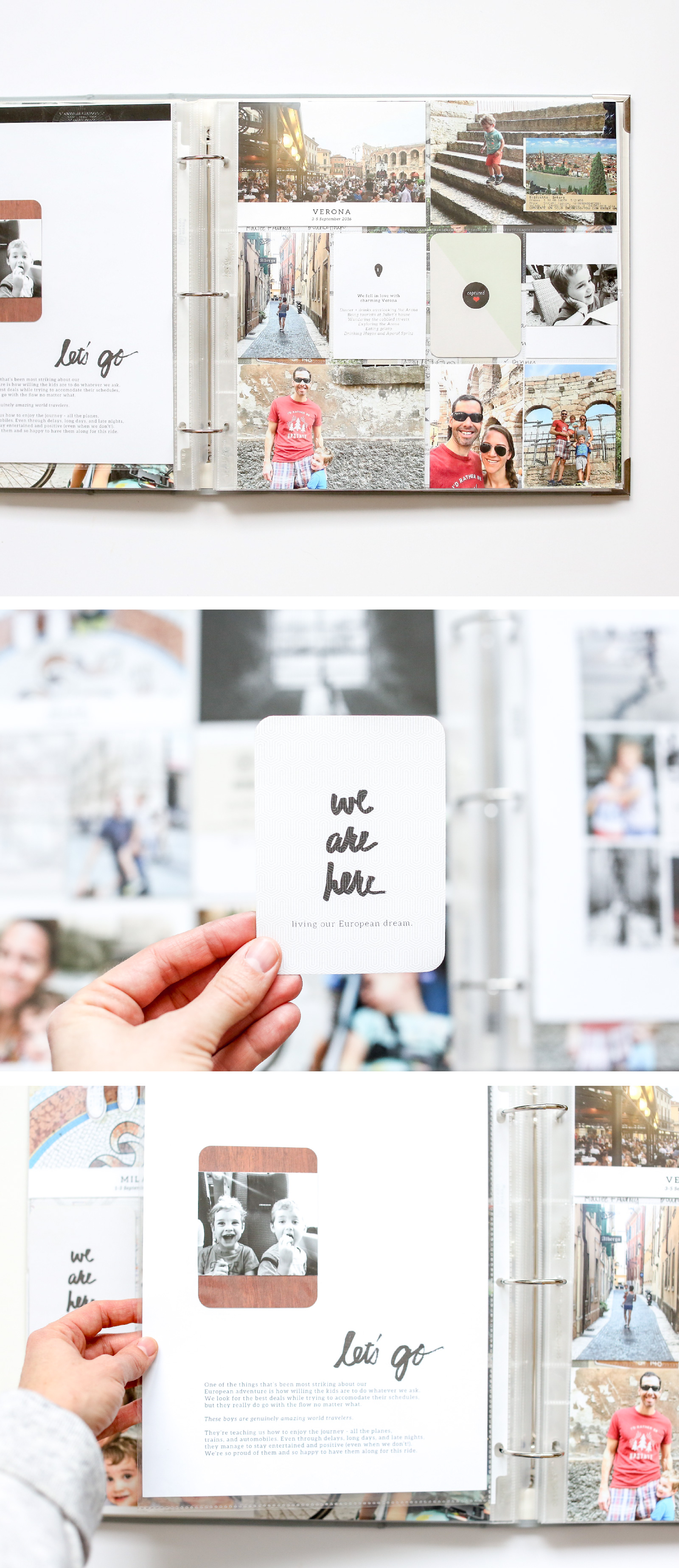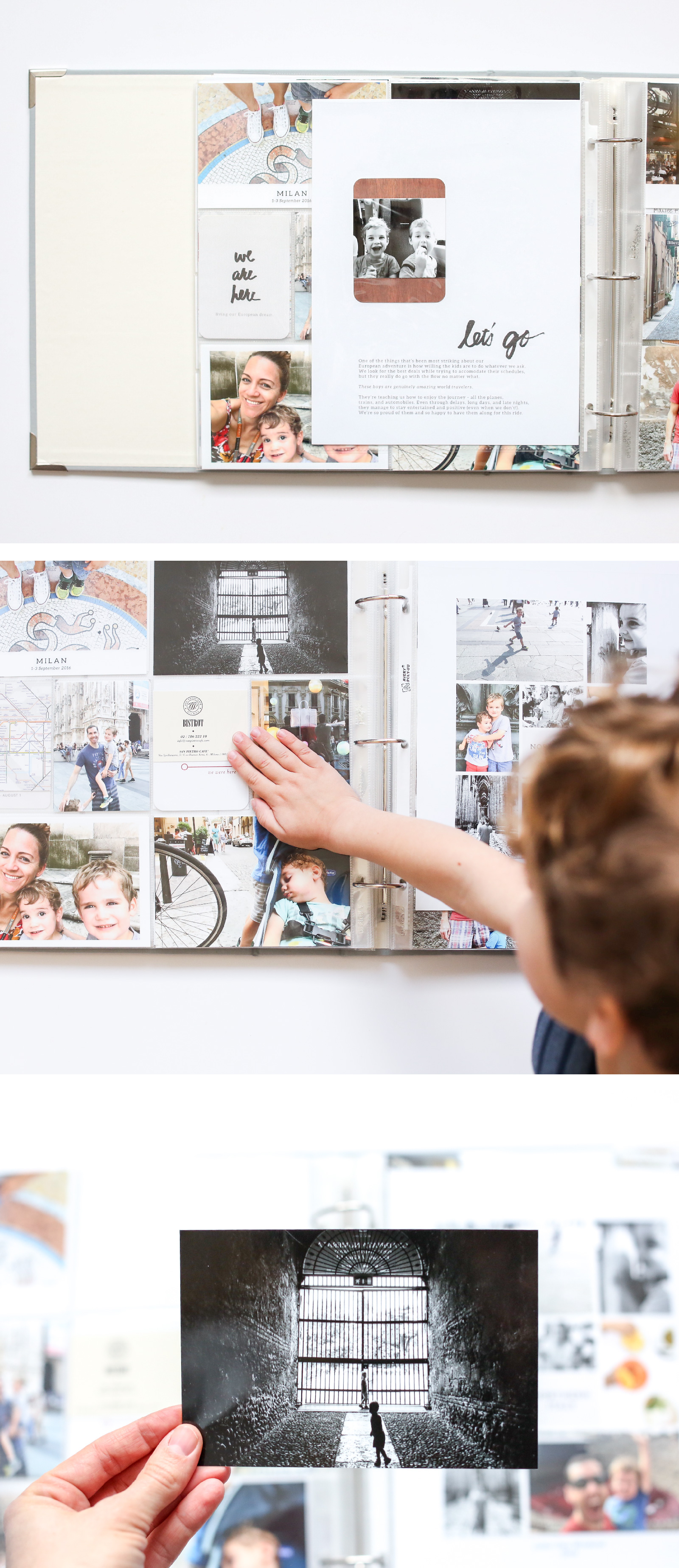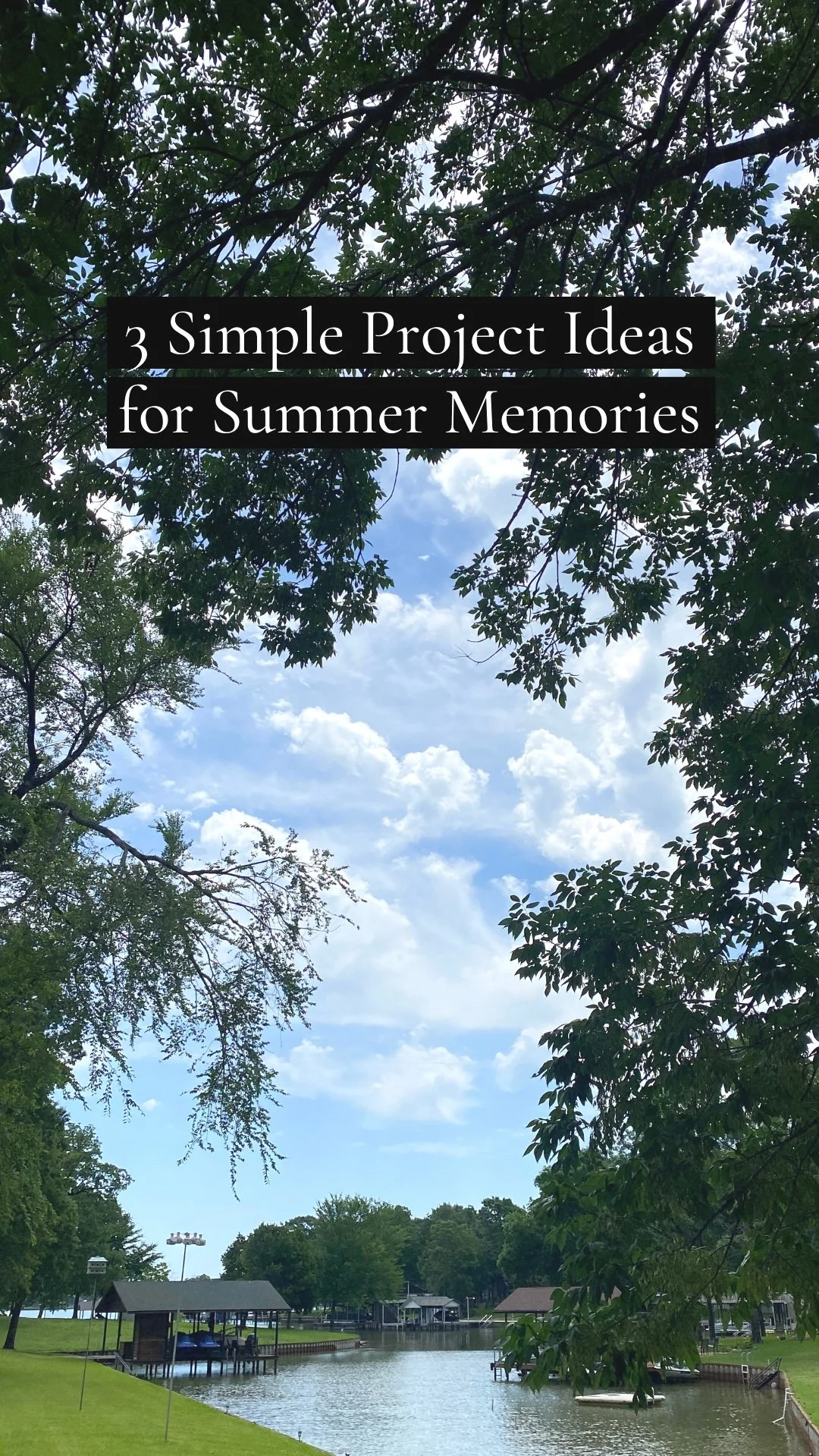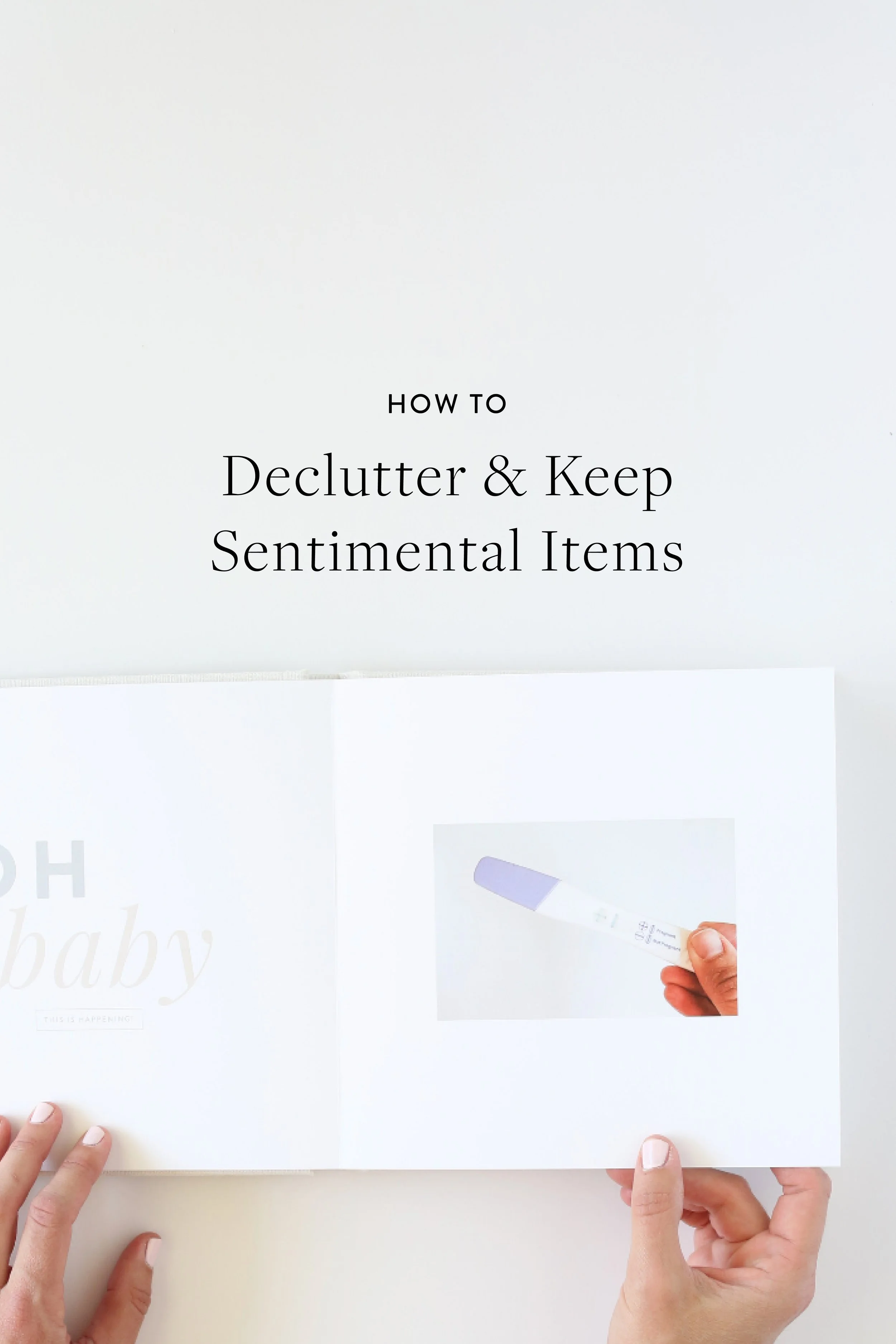How to Get Started Memory Keeping (even if you've never done anything with your photos)
Whether you’re brand new to memory-keeping or you’re a seasoned scrapbooker, we can all relate to the feeling of being “behind” on our memories.
We let photos pile up on our old phones and computers without ever doing anything with them.
We start projects we never finish.
We put off memory-keeping because the sheer volume of digital photos we’ve accumulated is too overwhelming to tackle.
I’ve been there. This is a challenge for all of us, I promise.
In this post, I’m sharing my thoughts on how to get started memory-keeping in a simple, modern, and relevant way.
My approach may be a little different from what comes to mind when you think of “memory-keeping.”
When it comes to documenting our memories, I firmly believe less is more.
I don’t do photo-a-day projects or individual photo books for each vacation we take. I don't do fussy, or embellished, and you won't find glitter near my desk.
I don't believe in documenting every moment.
I do, however, believe in getting our memories into a format we can share and enjoy.
Above all, I try to keep it simple.
Memory-keeping is a loaded term. We put so much pressure on ourselves as moms to capture every "special" moment.
But I promise you, not every moment will carry the same weight.
Just a few photos or video clips go a long way toward jogging your memory of a year, a home, a vacation.
We're busy, modern moms, and whether you're home with your kids or working outside your home, or somewhere in-between, many of us seem to be in the same boat: too much to do, too little time, and no bandwidth for dealing with the moments that have come and gone.
You don't have to enshrine every photo or bronze every baby moccasin.
If everything is awesome, nothing is awesome, so let's let ourselves off the hook with this stuff and keep it really simple.
Step 1: Begin with the end in mind
This is my favorite way to start basically anything: what do you want to have in your hands or in your home when this process is all said and done?
In a perfect world, what do you want your memories to look like?
Dream big.
I ask myself two questions to get myself thinking about this:
What memories do you want to document?
Capturing memories happens in the moment: you take a photo, a video, or save a piece of school work.
Documenting memories happens after the moment: you upload that pic to a photo book, or print a copy for the wall, or share a video on social media.
It's worth considering which of your many memories you actually want to document, as opposed to just capture.
Start making a list on a scratch piece of paper or on your phone and know that you don't have to do it all this week.
Here are a few prompts to get you started:
What experiences, baby years, periods of your life keep you up at night because you haven't done anything with the photos?
Do you want to document the previous year with a project or do you want to get "caught up" on a bunch of years with one catch-all project?
Do you want to tackle baby books? (Oh, the dreaded baby book!)
Do you want to document last year? Three years ago? A home? A vacation? A marriage? A school year?
Do you need to tackle a huge pile of your kid's school work / artistic masterpieces?
Do you want to document a life you've lost (a parent, grandparent, child)?
There are no "right" answers here. Everyone's situation and priorities are different.
Some memories deserve to be documented and some are fine living in our memories or on those old phones.
It's your job to distinguish between the two and my job to encourage you not to feel guilty about letting some things go.
Bottom line: what memories do you want to document so you can sleep easier at night?
Why does this matter to you?
Maybe you think your memories don't really matter enough to be preserved.
You figure the world is changing, the kids don't really care about this stuff, and you don't want to clutter up your bookcases with a bunch of albums or photo books no one cares about.
If this describes you, I'd encourage you to read this post before you write me off forever!
Maybe you know your memories matter but you're not sure why.
Have you lost someone who mattered to you? Been permanently shaped by a vacation, a relationship, a home, a period in your life?
I studied history in college, so part of my interest in memory-keeping is that I value the past.
I'm also really close to my parents, my siblings, and I have kids of my own, so that definitely makes me value the memories I make with them.
Also, memory-keeping helps foster gratitude in me.
Reflecting on my family's past, on the early years of my marriage, on my time as a military spouse helps me feel more grateful. Memories give me perspective.
Your reasons may look very different.
It's worth considering WHY your memories matter to you. This will help clarify which memories really need to be documented (hint: it's not all of them!).
Now that you know what you want to document and why it matters, you're ready for step two.
Step 2: Decide on a format
What format would best serve you and your family? What format do you feel comfortable tackling?
From photo books to framed pictures, there are so many fresh and modern ways to tell your story.
You might have been day-dreaming about this already and know exactly what you want to do, but if not, then consider a range of modern options:
photo books
Project Life
printed and framed photos at home
video
archive-quality boxes for school work
Consider what works best for you, your family, your home, and the memories you want to document.
For example, if you're documenting your family's entire year, you may want to put together a family photo book.
If you're documenting school work, it might work better to select a few favorite items for the year and store them in an archive box.
The goal here is to find a format that works best for you and the memories you're documenting.
Here's another tip: what works for someone else may not work for you.
Maybe you love video, but the thought of learning iMovie is so overwhelming you can't deal. Fine, forget it. Save your videos of the kids to the Cloud and browse through those snippets occasionally with your family.
Step 3: Decide on a frequency
Starting today, how do you want to structure your memory-keeping?
Which project(s) do you want to complete for which periods?
Here are a few ideas:
A video for each year or for each major memory
A family photo book each year
One album per kid for all of the school years
One archive box for each family member, updated / weeded out annually
A photo-a-day project (I can't help you with this one - I'm hopeless here!)
A photo book or creative album documenting the holiday season
A few framed photos from the year, updated each year and hung in a hallway
One family photo, printed, framed, with the extras and outtakes documented in a photo book
You can do multiple projects in a given period or just pick one project for a year. It's up to you.
But imagine you're "caught up." Think about how you want to document your memories starting from TODAY.
Decide how you want to tackle the archives.
If you haven’t done any memory-keeping in the past, decide how to take on those memories.
Will you let them sit on old phones or computers and just start from today? Will you put together one photo book documenting the first 15 years of your marriage?
Or a photo book on the years before kids and one for after the kids to bring you up to date?
Maybe you’ll do one photo book for each of your kids first five years.
Perhaps you're feeling ambitious and want to do one photo book for each year of your marriage to date.
Whatever you choose to do with the past, pick something simple.
You know the most important memories from those past years, so don’t worry about every detail!
You will not regret excluding certain memories. You will regret not doing anything with them at all because you’re afraid you won’t get it just right.
Just make it your goal to get some words and photos in a format you can share and enjoy.
Step 4: Take action
All this planning and day-dreaming is great and all, but it doesn't mean anything without taking action.
So, start by completing one project, just one. It doesn't have to be perfect, and it won't be! But no one will care about it looking perfect.
All they'll care about is seeing their faces somewhere other than your Facebook feed.
By now you have a list of ideas for what to document, why to document them, and your ideas for how you want to tackle future memories and the archives.
Pick one project and start tackling it.
Here are a few ideas:
A photobook documenting the last ten (or more!) years
Pick a few photos from each year and write about what happened that year.
The memories still in your head (and your partner’s head) are the ones that mattered the most to you, so get them down on paper NOW before they’re gone forever.
Add a few photos from that year after the page with your written experiences and that’s that.
A baby book
If this is on your list, then get it done. For some reason this causes so much heartache for us moms!
Go through the photos from your baby’s first year. Pick 7 to 16 photos from each month, print them as 4x6s and slip them into pocket pages.
Use the Project Life baby kit to complete the album once and for all. Add journaling for the things you remember and don’t sweat the rest.
Or put the photos into a simple photobook, broken up by month.
Add some text to the beginning of each month in the book with your memories of that month or any milestones you recorded and send it to print.
Put in on a shelf in your living room and be done with it!
Document the last year
I love the idea of doing this by seasons: winter (jan through march or spring break), spring (from spring break or april to end of school / mid-june); summer (june, july, august); fall (school days through thanksgiving); holiday (December to New Year’s Eve).
Set some basic parameters for yourself so you don't get overwhelmed and think you have to include every photo!
Choose up to 25 photos from each season, get them in a photobook, and for each season include a write-up of the memories from that season - family milestones, vacations, accomplishments, hard things.
Include a blank page for each season and you can just write in the memories in your handwriting.
Set a page limit for yourself, break it down by season, and knock it out.
You'll feel about 40 pounds lighter.
If you want to work through your memories on your own, then I hope this was helpful.
However, if you’re totally overwhelmed by the idea of adding memory-keeping to your very full plate, then perhaps I can help.
I’ll be working one-on-one with clients to put together custom memory-keeping projects and plans beginning in Fall 2018.
Your memories matter enough to document them. You won’t regret the time you spend doing something with those moments.
Keep it simple, meaningful, and spend some time putting together a project you can share and enjoy.
xo, Catherine
Further reading:
Why memory-keeping matters for moms
Starting my son's baby album
Why I'm using Project Life for our baby album
















